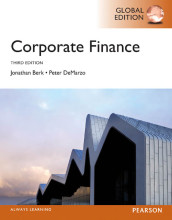Summary: Micro-Economie 3.2
- This + 400k other summaries
- A unique study and practice tool
- Never study anything twice again
- Get the grades you hope for
- 100% sure, 100% understanding
Read the summary and the most important questions on Micro-Economie 3.2
-
Consumer choice
This is a preview. There are 8 more flashcards available for chapter 26/10/2015
Show more cards here -
3 assumptions about consumer preferences are:
completeness
transivity
reflexivity -
What does an indifference curve show?
a set of consumption bundles about which the individual is indifferent -
What is a Cobb-Douglas utility function
U(x,y)=x^ay^b -
What does a straight Indifference curve say about the substitution
That means that the good is easily substituable -
What does a convex indifference curve mean
That means that the good is more complementary -
Utility maximization
This is a preview. There are 10 more flashcards available for chapter 30/10/2015
Show more cards here -
What is a budget constraint?
A curve that describes the entire set of consumption bundles a consumer can purchase when spending all income -
What are the 3 assumptions about the budget constraint?
1. each good has a fixed price and the consumer can buy as much of the good as he wants as long as he has the income to pay for it
2. The consumer has a fixed income to spend
3. the consumer can not save of borrow -
What is a feasible bundle?
The bundles under the budgetconstraint, that are the bundles the consumer can afford. -
What is the slope of the budgetconstraint?
-Px/Py -
How can you maximize the utilization?
MRS=Px/Py
- Higher grades + faster learning
- Never study anything twice
- 100% sure, 100% understanding
































